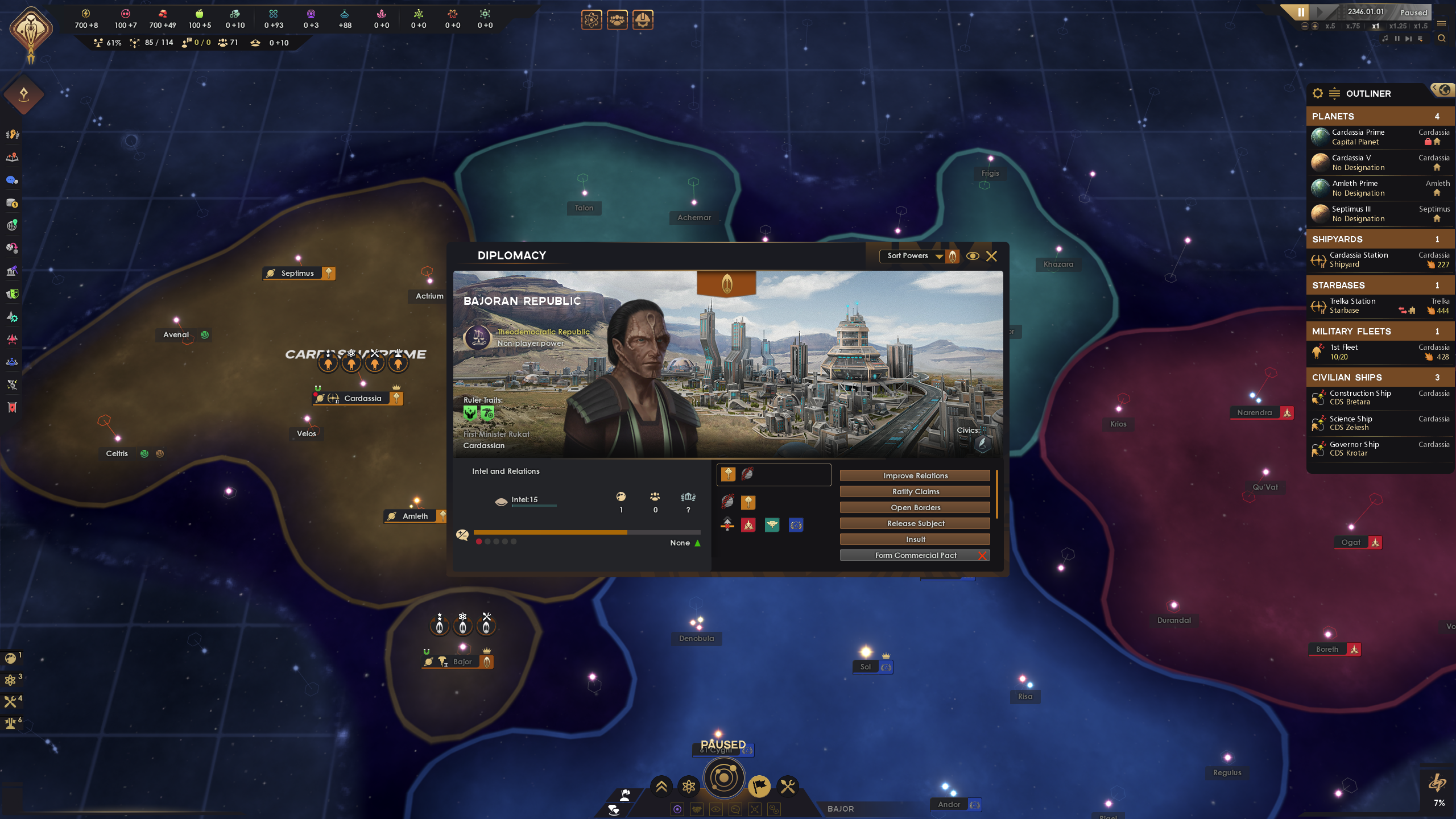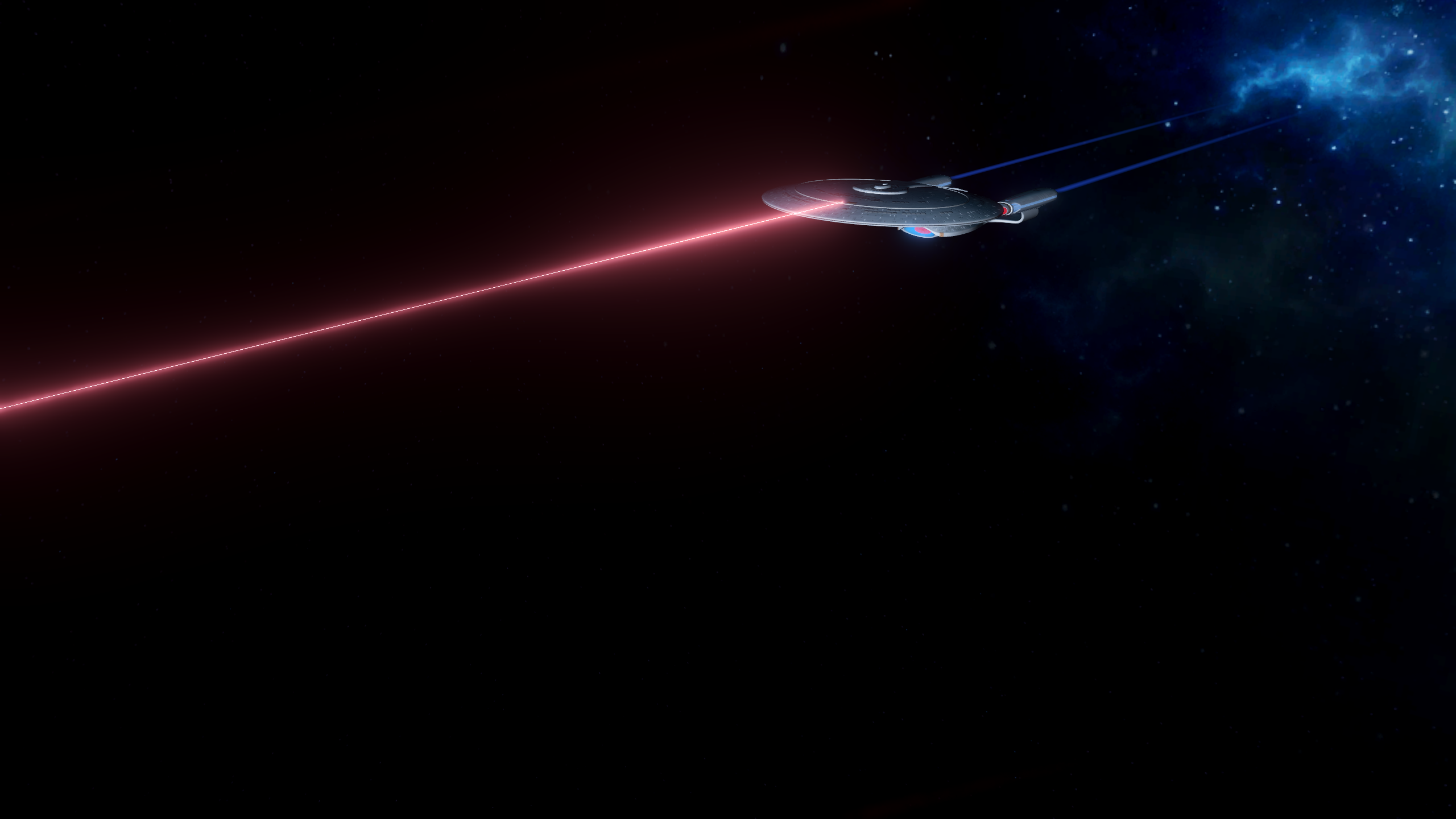Our Verdict
Compelling, but not quite there yet. Needs two seasons to grow the beard.
PC Gamer's got your back
What is it? Paradox style grand strategy, but Star Trek.
Release date October 12, 2023
Expect to pay $30/£27
Developer Nimble Giant
Publisher Paradox Interactive
Reviewed on Intel i5, 16GB RAM, GTX 1660
Link Official site
I am opening this review with a warning: I am going to spend a lot of time here talking about a different game. This isn't something I usually do, but as you may have guessed from the screenshots, Infinite is very much built on the chassis of Stellaris with some appropriately Star Trek twists. Consider it the Napoleon: Total War to Stellaris's Empire: Total War: a more focused, narrative spin off from a larger and more sprawling game.
The game is set firmly in the Next Generation/Deep Space Nine era (it actually begins with the Romulan attack on Khitomer, where Worf's family were killed) and portrays the Federation, Klingons, Romulans and Cardassians as four superpowers locked in constant competition. In my game for example, an early decision brought the Federation and the Klingons closer together, and the Romulans and Cardassians immediately responded by forming a counter-alliance to stop the perceived threat.

Unlike Stellaris, Infinite is only semi-random. The four great powers collide in the middle of the map in roughly the same way every game while the rest of the galaxy is full of randomly placed "minor powers". So a classic Federation member like Trill can feasibly spawn on the opposite side of the galaxy and end up getting invaded by Romulans. It's not unlike joining a Stellaris game a third of the way in, after the big power blocks have formed. For the most part this works surprisingly well, but there are some oddities: for example playing as the Federation I was prompted to colonise the uninhabited planet of Denobula. I know, Nimble Giant, I like to pretend Enterprise never existed sometimes too.
Here's the good news: Star Trek: Infinite expresses the Federation fantasy far better than Stellaris ever did. You can genuinely expand by diplomacy here, buttering up minor species and inviting them, one by one. The other playable factions have their own spin on this, with the Romulans setting up puppet governments and the Cardassians using something similar to Stellaris's overlord system. The Klingons just invade people, they don't really do subtle.
One of the other big changes from Stellaris will be familiar to players of other Paradox games. There's now a narrative structure to the game in the form of a branching mission tree, where events can be triggered by objectives as exciting as "have Bajor join the federation" or as banal as "survey 10 systems". Some of these events follow classic Trek storylines, but others present compelling 'what if' moments, like Romulan and Vulcan reunification. They're as much about steering your playstyle as getting the rewards, and I ended up enjoying them a great deal.

Continuing mission
One of the best of these mission chains is the Enterprise itself. Completing the first step will reward you with a jack of all trades super ship that is equally adept at science, war and diplomacy. Sending the Enterprise out to do various tasks will reward you with a Next Generation crew member, who might give you a generic empire bonus, or might physically appear as a recruitable leader. Other major and minor Trek characters can also emerge in this fashion, meaning that, entirely organically, I once ended up in a situation where the Enterprise was valiantly holding the line against an unstoppable Borg sphere, only to be rescued by Benjamin Sisko commanding a fleet of Voyagers.
I once ended up in a situation where the Enterprise was valiantly holding the line against an unstoppable Borg sphere, only to be rescued by Benjamin Sisko commanding a fleet of Voyagers.
At this point I have to talk about the targ in the room. Stellaris already has a Star Trek mod, so why should you pay for a game when a mod is free? Well Stellaris's New Horizons mod is a sprawling epic that covers the entirety of Star Trek history and every faction in the galaxy, while Infinite is focused on the Alpha and Beta quadrants of the Next Generation era, and frankly I think it's better for it. This means, for example, that the Borg are more akin to the terrifying invader from nowhere they are in the show, rather than another player faction. It's also, paradoxically, the cheaper option if you don't already own a full deck of Stellaris DLC.
Something Infinite should have over any mod is polish, and while it does feel less clunky than New Horizons, there are still more issues than there should be at launch. Like a decidedly un-silent notification for a "silent alarm", or the strange bug that caused the voiceover to claim a character had died every five minutes, or the time I ended up with two Rikers. Although to be fair that last one also happened in the show.

It's things like this, and the more direct ports from Stellaris, that make Infinite feel a little unfinished. I don't mind that Nimble Giant haven't really changed the planet building interface, but I feel like I probably shouldn't be trading energy credits for alloys as the famously post capitalist Federation. There's also a disappointing lack of interactions with pre-FTL civilisations, a Prime Directive dilemma or two would've been nice. In the end I stopped playing well before the victory conditions, but that's also frequently true of Stellaris, a game I've played for hundreds of hours.
Nevertheless at the end of every review I ask myself "do I still want to play this game some more, now that I'm not being paid?" and the answer here is yes. I really do want to try that reunification story arc, I want to see if I can evacuate the Romulans before their sun explodes this time (sorry guys), I want to actually get the Enterprise E before Jean Luc Picard dies of old age.
I don't mark games on what they could be, but I certainly hope that Infinite gets the same kind of post release support as its bigger brother. I think it would be fascinating (captain) to see how the two games grow and inform one another over the years. Now that would be the best of both worlds.
Compelling, but not quite there yet. Needs two seasons to grow the beard.


